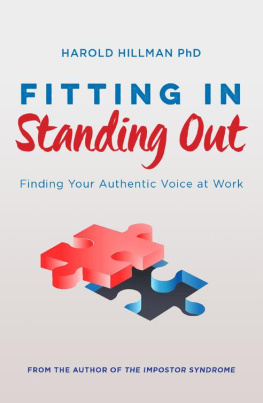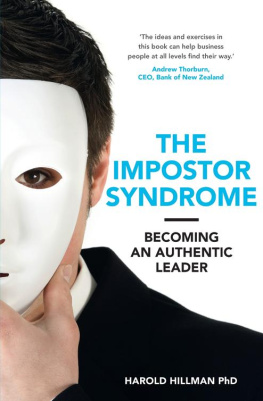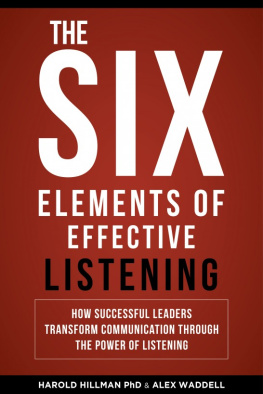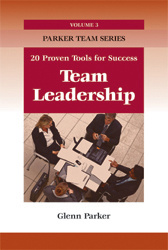This book packs a lot of wisdom into bite-sized chapters, with case studies, toolkits and advice that is easy to apply.
Andrew Thorburn, Group CEO of National Australia Bank
Be effective and fulfilled at work and find your authentic voice.
Become a leader others will want to follow.
Whatever your role or job, you need to find the sweet spot where you can fit in with your team, yet have the ability to express your true opinions in a way that will be heard and accepted. This book is about finding that sweet spot. It is an essential read for anyone who:
- wants to make sure they are heard, regardless of rank or position
- is currently going through induction into a new team or organisation
- is on the fringe of a team, struggling to have impact
- leads a team and wants to ensure each member can play an effective role
- runs a company and wants to ensure the culture is conducive to authentic leadership at all levels
Harold Hillman is the managing director of Sigmoid Curve Consulting Group. He coaches business leaders and executive teams to be more purposeful about leadership and what it means to inspire others towards greater possibilities.
Prior to Sigmoid Curve, Harold served in senior executive roles with Fonterra, Prudential Financial and Amoco Corporation. These roles followed his earlier career as a clinical psychologist. His first book, TheImpostor Syndrome, was published in 2013.
www.sigmoidcurve.com
If you add up all the hours that you spend at work each week both the physical and mental hours its fair to say that youre investing a significant amount of yourself into a cause or purpose that should be more important than a pay cheque. Sadly, many people go to work each day with no real sense that their perspective matters as to how the company operates or how it will grow.
Silence is not golden in people or companies where authenticity is truly valued. Whether youre a team leader or a member of a team, it is essential that you stay connected to your authentic voice if you want to make a positive difference where both you and the team are growing.
I dedicate this book to anyone who may be wondering whether fittingin has become too comfortable, or standingout has become too painful. And if you believe that youve got it just right, I especially hope you find value in learning how to sustain the power of your authentic voice. It defines who you are.
Harold Hillman
June 2015
Contents
I have had the pleasure of knowing Harold Hillman since 2009. He has worked with me personally, and then with my executive teams in Australia and New Zealand. Since then he has worked with a number of people in my broader team. He is a prominent element of the culture we have here at National Australia Bank Ltd, and I value him as a mentor and role model.
Harold is himself a genuine, authentic leader. He holds personal qualities of precision, sharpness and wisdom, and applies these to his work. A point of admiration for me was when Harold, in his fifties, made the decision to stretch himself; to not only start up a business and run marathons, but also to write two books. The two books The Impostor Syndrome and now Fitting In,Standing Out provide simple, practical models that are easy for busy executives to apply.
Leaders today face constant challenge, change and tension in their professional lives. Increasingly complex situations require them to seek advice from others, and then make decisions, often under pressure. To be an effective leader in this environment, you need to continually learn about yourself and about those you lead or deal with. While it is not easy to take the time to learn and grow when you are bombarded by a dozen demands on your time, it is crucial to take the time to learn to be better. Fitting In, Standing Out helps expand your perspectives and explores profound, true concepts simply and in bite-sized chapters. Toolkits, checklists, case studies and activities make these complex ideas easy to apply in your day-to-day life.
Harold cites Peter Druckers famous Culture eats strategy for breakfast, and over the years I have learned first-hand that culture is vital for an organisations success. However, corporate culture as a concept has also become nebulous and even hackneyed. Fitting In, Standing Out shows you what underpins it, why it is important, and how to get there. The biggest driver of culture is the leader, and the biggest behaviour is being real. Key to this is authenticity. For a leader, this is how you turn up and how others experience you: if you are reliable and consistent, you can earn trust. In Chapter Four Harold explores the seven key qualities of authenticity: positivity; being real; edge; vulnerability; energy; integrity; and connectivity. Of these, being real resonates the most with me. Its about being present, listening, and caring about people even if you have to do hard things.
In an environment full of seemingly endless challenges, we are told that leaders know what they are doing and have everything under control. In fact, Harold shows us that real, true leaders acknowledge the frames they are looking through, and learn to trust and extend trust. It is through trust that performance thrives.
Harold Hillman has made me the leader I am and continues to shape the leader I am becoming. I value that very much. So it is with pleasure that I have read Fitting In, Standing Out, knowing that the wisdom contained in its pages will enable others to become the best leaders they can be and to create authentic cultures among those they lead.
Andrew Thorburn
Group CEO of National Australia Bank
After hugging her mum goodbye for the third time since getting out of the car, five-year-old Rene propels herself through the school gate and walks towards her teacher, who has a group of kids assembled around her. The school yard is full of groups of kids standing around several teachers, all of whom resemble mother ducks gathering their broods into formation.
Be good for the teacher, Rene. That was the edict her mother had repeated a few times over the weekend and again in the car that morning. Rene recognises two kids from kindergarten, both huddled on the other side of the teacher. She falls into line next to two new girls who have started to skip about. Rene likes the skipping game and soon joins in. Before long, the three of them fall out of formation from the others, skipping together and giggling with glee.
Settle down, girls. I need you to stay close to me, the teacher chides. Rene quickly pulls back, but the other two girls keep jumping, one of them with even more vigour than before. Be good for the teacher, Rene. Clearly the other girls arent bound by that same edict. And they are still having fun. Rene starts to skip again, but pulls back when the teacher looks sternly at her. I wont do that again, she decides. Im a good girl.
It starts early, this dilemma to be good and fit in with the group, while also yearning to buck the trend and be your own person. Like Rene, and all of the kids in the school yard who are trying to find their place, you have been recalibrating across your lifetime to manage this recurring dilemma. Some people lose themselves by fitting in. And some people lose others by standing out. Youve had more years than Rene has to find that healthy balance. If you are still recalibrating your authentic voice, chances are you have not yet discovered your personal sweet spot. The chapters that follow recommend some strategies and pathways to navigate there.









